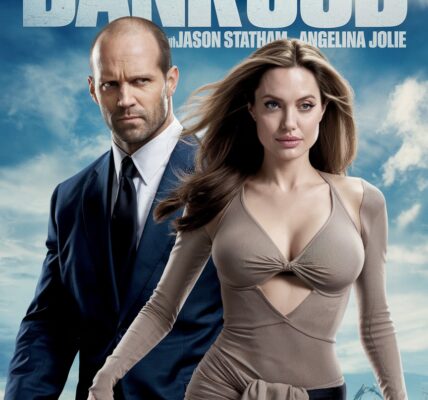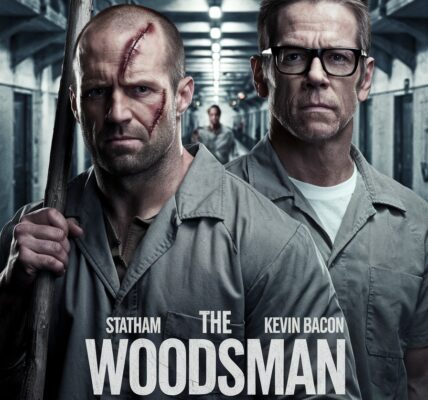1. Plot Summary
Kim Yool (Bruce Khan) was once a special detective whose wife and daughter were brutally murdered by a ruthless crime lord, Carlos Kun (Park Hee-soon). Overcome by grief and vengeance, Yool tracks Kun to an isolated prison island known as Sura Island (or Soorado Island / AP-101) — a lawless exile zone where death-row inmates and violent criminals are dumped and forced into survival combat. Wikipedia+3AsianWiki+3asianmovieweb.com+3
In a drastic move, Yool deliberately gets himself convicted and sent to the prison island so he can confront Kun up close. While there, he saves a woman named Mali (Yoon Jin-seo) and her daughter Jin, who had earlier suffered under Kun’s rule. Mali harbors resentment toward Yool (because he is partially responsible for her incarceration), but grudgingly provides him with information about Kun’s power structure and whereabouts. eontalk.com+4asianmovieweb.com+4dmovies.org+4
Yool confronts gangs of Kun’s henchmen, maneuvers through prisoner politics (including an inmate leader Bau played by Kim In-kwon), and gradually fights his way to Kun’s inner sanctum. In the climactic showdown, Yool faces Kun in a brutal duel, ultimately slaying his longtime enemy. He then escapes the island along with Mali and Jin. asianmovieweb.com+3Wikipedia+3WorldFilmGeek+3
Because the narrative is very revenge-driven, much of the plot runs as a linear progression of infiltration, fights, alliances, and confrontation.
2. Notable Elements
Action & Fight Sequences
The core strength of Revenger lies in its martial arts and combat choreography. Bruce Khan, himself a martial artist, infuses many scenes with dynamic kicks, strikes, weapon work, and close-quarters fights. Many reviewers note that when the camera focuses cleanly on the action, the film can feel visceral and thrilling. dmovies.org+3actionreloaded.com+3asianmovieweb.com+3
One memorable opening scene features Yool, restrained and masked, fighting off multiple attackers on a beach — establishing both his skills and his resolve. eontalk.com+3WorldFilmGeek+3asianmovieweb.com+3
The setting of the island prison amplifies the combat tension: fights can happen in cramped corridors, open yards, jungle terrain, or dilapidated buildings. The lack of external law or authority gives the action free rein to be raw and unrestrained. Facebook+3eontalk.com+3dmovies.org+3
However, the film is not without technical issues. Some critics note shaky camerawork, overuse of close-ups or jump cuts during fights, and occasional distracting CGI blood splatter. WorldFilmGeek+3dmovies.org+3chrichtonsworld.com+3
Character Dynamics & Tension
- The relationship between Yool and Mali adds emotional friction. Mali’s antagonism toward Yool (because he sent her to prison) and her later reliance on him brings complexity, albeit lightly handled. dmovies.org+5asianmovieweb.com+5dmovies.org+5
- Kun is more of a symbol of evil than a deeply characterized villain. He is menacing, disfigured, and commanding, but his motivations and inner life are underexplored. chrichtonsworld.com+3asianmovieweb.com+3dmovies.org+3
Tone & Pacing
Revenger is heavy on action and relatively light on introspection or dramatic pauses. The film does not pause much for character development or subplots. As one review puts it, the story is “colourful yet soulless.” dmovies.org
Midsections have been criticized for pacing lulls (e.g. scenes with prisoner politics, underdeveloped side arcs, or filler) that momentarily slow momentum before more fights. WorldFilmGeek+3dmovies.org+3Budomate+3
The film leans into genre tropes—revenge, silent hero, corrupt prison lord—and doesn’t always subvert them. That said, for fans of straightforward action, its lack of narrative convolution is a feature, not necessarily a flaw. Rotten Tomatoes+2dmovies.org+2
3. Themes & Messages
- Revenge & Justice: The most overt theme. Yool’s entire mission centers on retribution. The film raises the question: at what cost does vengeance come? Does it restore peace or perpetuate violence?
- Isolation & Lawlessness: The prison island is a microcosm without rules. It forces characters to live by their own strength, alliances, and moral codes—or perish.
- Redemption & Responsibility: Yool’s interaction with Mali and Jin suggests a possibility of atonement, or responsibility beyond revenge. His duty shifts from mere killing to rescue and protection.
- Sacrifice & Resistance: Inmates and townsfolk who oppose Kun risk all. The film gestures at collective uprising within the prison against tyrannical rule.
- Silence & Expression: Yool speaks sparingly; much of his character must be read through action, visage, and resolve. This choice underscores themes of internal anguish and stoic resolve.
In terms of holiday or seasonal sentiment, Revenger doesn’t directly engage with themes like forgiveness, family reunion, joy, or celebration. Its emotional core is darker—loss, vengeance, survival. If one were to draw a tenuous connection, one might see a journey through darkness (pain) toward some form of catharsis (Yool’s confrontation) as loosely allegorical to redemption arcs common in holiday stories.
4. Personal Impressions
What worked for me:
- When the fight scenes land cleanly and the camera gives them space, they are compelling, visceral, and entertaining. I enjoyed how the film allowed the action to carry much of the story, rather than overburdening it with exposition.
- Bruce Khan is convincing as a martial arts protagonist. His physical discipline and screen presence carry the film even when dialogue is minimal.
- The island prison setting is effective: enclosed yet wild, lawless yet structured by force. It furnishes a vivid backdrop for survival combat.
- The emotional tension (Yool vs Mali, Jin’s safety) adds stakes beyond revenge, even if not always fully exploited.
What didn’t quite land:
- Some performances feel overacted or stilted (especially in side characters). Mali’s resentment and forgiveness feel thin. eontalk.com+2dmovies.org+2
- Kun as a villain lacks depth; he is more an obstacle than a compelling counterpoint.
- The plot has gaps and conveniences: characters sometimes make decisions that strain credibility, and connections between subplots are loosely tied. Budomate+2dmovies.org+2
- Stylistic choices (intrusive zooms, shaky cuts in fights) detract from clarity in action. dmovies.org
- The final acts, though intense, feel a bit conventional and less surprising than earlier promise might suggest. Some reviewers felt the film ends on familiar notes. chrichtonsworld.com+2dmovies.org+2
Still, the film delivers on what it promises: a revenge-driven action ride with martial arts flair.
5. Audience Recommendations
You might particularly enjoy Revenger if:
- You are a fan of martial arts and action films and want hand-to-hand combat rather than heavy plot twists.
- You like revenge narratives with a lean, direct approach rather than deep character psychology.
- You appreciate films that showcase a lead hero who speaks through action, not words.
- You enjoy settings where survival, tyranny, and combat mix (prison islands, dystopic arenas).
It might be less compelling if you prefer:
- Rich character development and layered themes over action.
- Psychological nuance or moral ambiguity.
- Perfect technical polish, especially in camera work and editing.
6. Conclusions & Rating
Revenger is not revolutionary, but it stands as a competent, no-frills martial arts revenge film. Its strongest asset is its action core: Bruce Khan leads with physical conviction, and many fight scenes are satisfying. Its weaknesses lie in thin characters, occasional technical lapses, and a narrative that doesn’t always exploit its emotional potential.
If you lean into its genre identity and watch it for action, it can deliver. But if your priority is narrative depth, you may find it wanting.
Final recommendation: For fans of clean, aggressive martial arts cinema with few distractions—Revenger is serviceable and sometimes thrilling. Just moderate your expectations.
Star Rating: ★★★☆☆ (3 out of 5)
Watch more:




